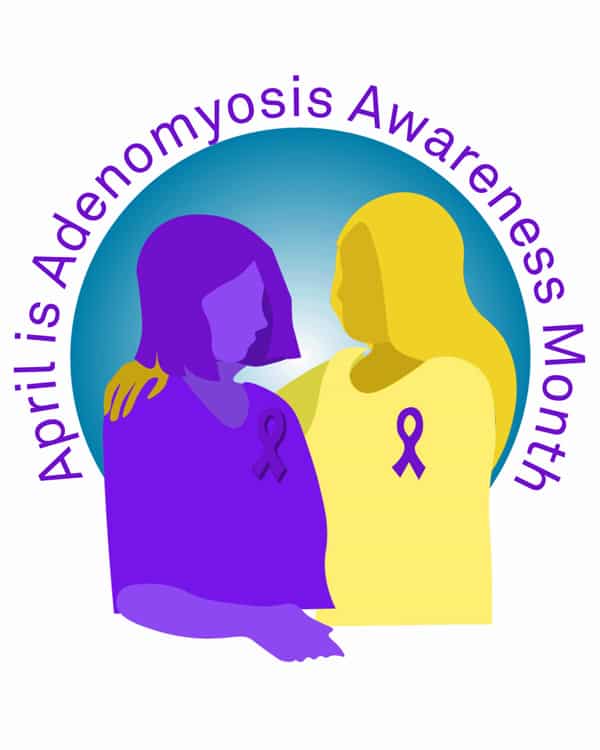Raising Awareness About Adenomyosis

April is adenomyosis awareness month. Although adenomyosis is a common condition affecting the uterus, there is still a great lack of awareness about it. Adenomyosis is more frequently discovered in women above the age of 40, those who had more than one child, or those who have had Cesarean section or uterine surgery. However, adenomyosis is increasingly being diagnosed in young women and patients with infertility as well.
What is adenomyosis?
Adenomyosis is a condition where the cells of the inner lining of the uterus (the endometrium) invade and grow inside the muscular layer of the uterus or the myometrium. The blood vessels in the myometrium become damaged when the infiltrating endometrial cells thicken and shed during the menstrual cycle. This creates pockets of blood in the muscle wall. This causes eventual enlargement of the uterus, profuse menstrual bleeding, and recurrent pain.
About one-third of women with adenomyosis do not experience any symptoms. However, for those who do, the condition adversely affects many aspects of life including daily activities, relationships, and emotional health.
The difficulty of diagnosing adenomyosis
Many of the symptoms of adenomyosis are similar to those of endometriosis, making diagnosis difficult. This means that some women may wait years before receiving a diagnosis.
SYMPTOMS OF ADENOMYOSIS
- Pain with periods (killer cramps)
- Heavy periods
- Endo belly symptoms
Over the last few years, diagnostic tools have improved. There are now imaging techniques available such as transvaginal ultrasound sonography and magnetic resonance imaging, which can allow clinicians to make a non-invasive diagnosis of the disease. However, there is a lack of a shared definition, classification, or diagnostic criteria based on non-invasive diagnostic tests. The gold standard to confirm a diagnosis of adenomyosis remains the pathological examination of a biopsy taken from the uterus after a hysterectomy.
Only a highly trained specialist may be able to suspect adenomyosis from a pelvic exam or uterine examination during laparoscopy.
Why is it important to raise awareness about adenomyosis?
TREATMENT OF ADENOMYOSIS
Dr. Seckin’s Approach:
- Constructive treatment using the Osada procedure with uterine preservation
- Definitive treatment using hysterectomy with ovarian preservation
Because of the lack of awareness about adenomyosis, many women may presume that heavy periods and severe period-related pain are normal and subsequently may not see a doctor for their pain.
The lack of awareness among healthcare professionals can cause physicians to either misdiagnose patients or not take patients’ symptoms seriously.
It is therefore critical to raise awareness about adenomyosis to increase knowledge about the condition among women, healthcare professionals, and other members of the public.
Greater awareness can help early diagnosis and ensure patients receive the best possible care and support.
Increased awareness also means an increase in research support to develop new treatments and improve government healthcare policies.
How can you help raise awareness?
You can help raise awareness about adenomyosis by volunteering or donating to an organization focusing on issues related to the condition.
You can use social media or news media outlets to raise awareness by sharing your story, as well as resources and information about the disease.
Also, you can also participate in events that help educate patients and the general public.
Finally, you can raise awareness by writing to your local elected officials and telling them your story and the initiatives that matter to you.
Get a Second Opinion
Our endometriosis specialists are dedicated to providing patients with expert care. Whether you have been diagnosed or are looking to find a doctor, they are ready to help.Our office is located on 872 Fifth Avenue New York, NY 10065.
You may call us at (646) 960-3080 or have your case reviewed by clicking here.